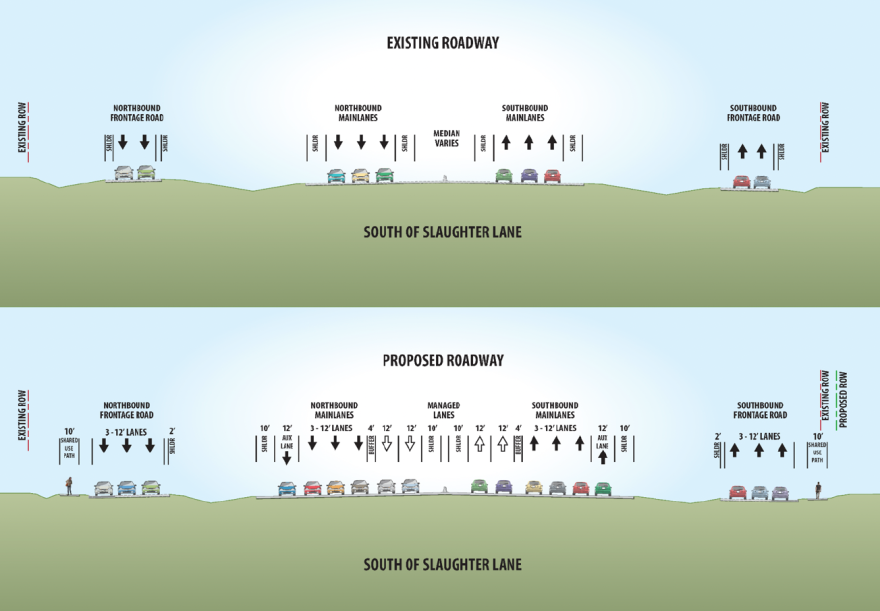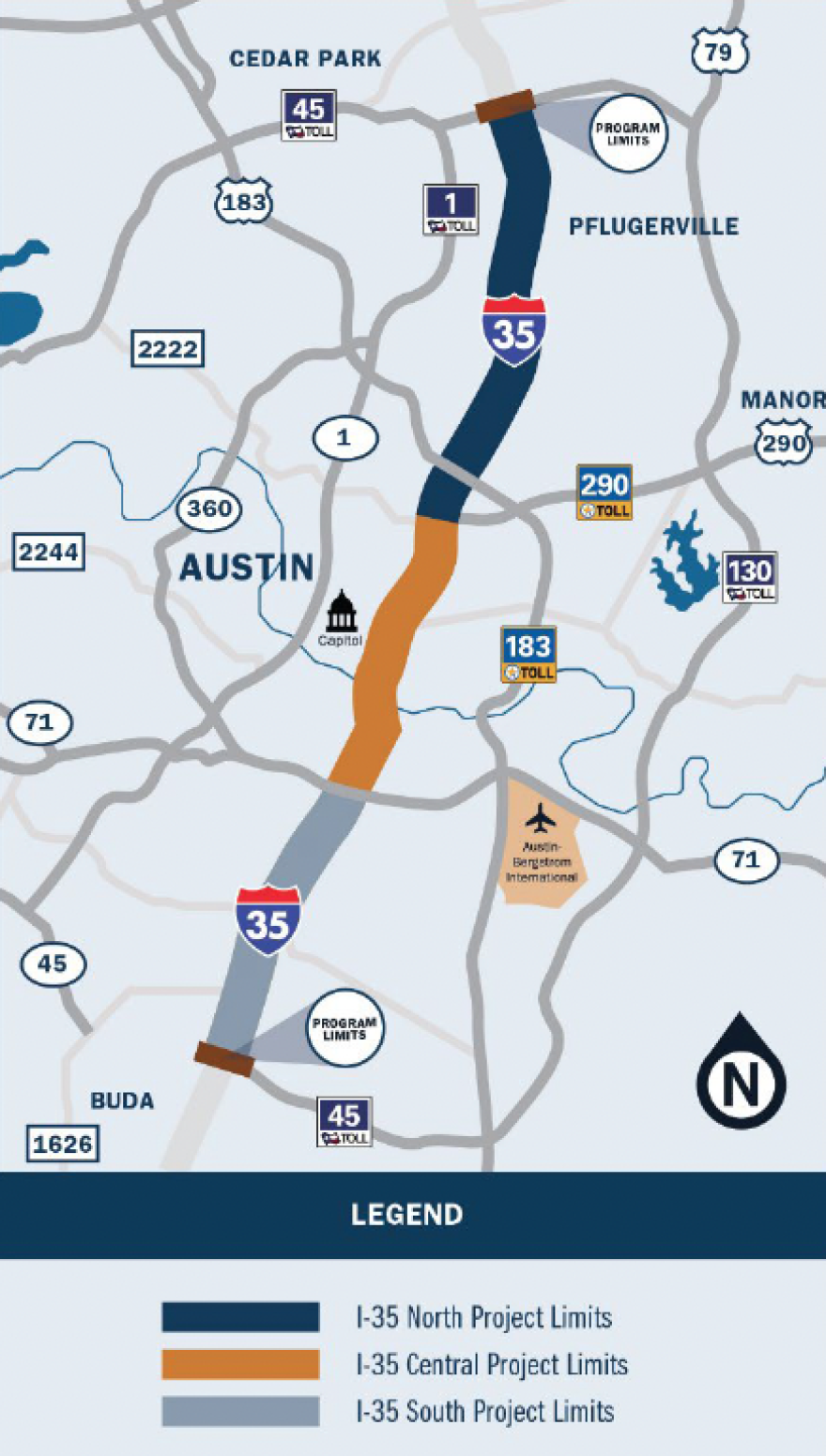Amid howls of protest and a legal challenge in federal court, the Texas Department of Transportation is plowing ahead with the first of three projects to widen I-35 through Travis County.
The I-35 Capital Express South project stretches from Ben White Boulevard south to State Highway 45 East. The signature feature will be two elevated high-occupancy vehicle lanes in each direction from Ben White to Slaughter Lane — dramatically altering the look of the highway through that stretch of South Austin.

Adding an upper deck will also boost the highway's capacity. For example, the number of lanes between Stassney Lane and William Cannon Drive will increase from 12 to 19. From Slaughter Lane to SH 45E, the number of lanes will almost double from 10 to 18.

TxDOT's contractor, Fluor Corp., will also be tasked with widening the Slaughter Creek Bridge, building a new Onion Creek Bridge and adding 13 miles of new paths for pedestrians and cyclists.
Construction on the $548 million project won't start until early next year, but a crowd of officials huddled for a groundbreaking ceremony Tuesday morning just a few steps from the interstate, bracing themselves against an unseasonably cold wind.
"I know it's a little cool, but we're here for a very important reason," said Bruce Bugg, who chairs the Texas Transportation Commission that oversees TxDOT. "Improving the lives of the men and women who live in Austin, who have to get up every morning and go to work. ... They want to be home back with their family and not spend all their time mired in congestion."
As Bugg spoke, about a dozen protesters almost a football field away could be heard chanting slogans like, "More cars, more pollution, more lanes is not the solution," and holding signs that read, "This is a climate crisis," and "Our City, Our Choice."

"This is a terrible project. It won't improve traffic at all," protester Adam Greenfield, a co-founder of the grassroots group Rethink35, said.
"Any vehicles that move into the HOV lanes will just be replaced by more vehicles in the main lanes," he said. "We are not a highway-loving people anymore. People don't want to be stuck in their cars in freeway congestion anymore."
Transportation engineers and economists have for decades pointed to a paradox of highway planning: increasing highway capacity tends to draw more drivers to the roads, frustrating long-term attempts to reduce congestion while creating even more gridlock.
When asked about the risks of this so-called "induced demand," TxDOT Austin District Engineer Tucker Ferguson defended the project.
"We're expected to double in population over the next 20 years or so, so the demand is here whether this project gets built or not," he said. "We're being responsive to what's happening in our community and this is the right project to do at the right time."
Local officials seem less convinced.
Notably absent from Tuesday's groundbreaking ceremony were either of the Austin City Council members whose districts include the stretch of I-35.
District 2 Council Member Vanessa Fuentes was invited to the ceremony but declined to attend. Her office said she'd be releasing a statement on the I-35 expansion. District 5 Council Member Ann Kitchen was also absent. Her office did not respond to KUT's questions about why before this story was published.
Austin City Council members don't have direct control over the highway project, but they've expressed concerns to TxDOT. And the state agency has worked with city staff on efforts to make the expansion more politically palatable, for example by covering the main lanes of I-35 downtown.

But the project is still a tough pill to swallow for many local officials.
Council Member Chito Vela, whose North Austin district straddles I-35, warned his fellow council members about the risk of induced demand worsening congestion. In a post on the council message board Tuesday, Vela called for I-35 to be lowered and covered from at least Lady Bird Lake to U.S. 290 East.
Meanwhile, a legal challenge could halt construction.
A federal lawsuit filed by Rethink35, the Texas Public Interest Research Group and Environment Texas alleges TxDOT improperly split the I-35 expansion in Travis County into three smaller parts — South, Central and North — in a bureaucratic sleight of hand to avoid a more rigorous environmental review that a single 28-mile project would require.
TxDOT's Ferguson wouldn't comment on the arguments in the lawsuit, citing the pending legal wrangling. But TTC chair Bugg spoke Tuesday of the three projects as part of a unified whole.
"This project, I-35 Capital Express, that's going to start here on the south end and we're going to take it all the way up to the north end and go through the center of Austin," Bugg said. "This is going to be a $7.5 billion project that is absolutely, sorely needed."
The I-35 Capital Express South project is scheduled to be completed by late 2028.









